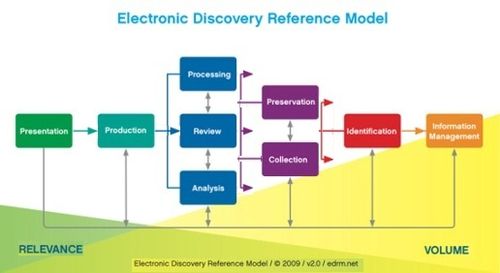Is a Blended Document Review Rate of $466 Per Hour Excessive? – eDiscovery Replay

Even those of us at eDiscovery Daily have to take an occasional vacation (see above); however, instead of “going dark” for the week, we thought we would use the week to do something interesting. Up to this week, we have had 815 posts over 3+ years of the blog. Some have been quite popular, so we thought we would “replay” the top four all-time posts this week in terms of page views since the blog began (in case you missed them). Casey Kasem would be proud! Published less than two months ago in September, this post quickly vaulted to the top as the most viewed post of all time with over 1,400 lifetime views! I guess the nerve of the plaintiff’s lead counsel struck a nerve with our readers! Enjoy!
______________________________
Remember when we raised the question as to whether it is time to ditch the per hour model for document review? One of the cases we highlighted for perceived overbilling was ruled upon last month.
In the case In re Citigroup Inc. Securities Litigation, No. 09 MD 2070 (SHS), 07 Civ. 9901 (SHS) (S.D.N.Y. Aug. 1, 2013), New York District Judge Sidney H. Stein rejected as unreasonable the plaintiffs’ lead counsel’s proffered blended rate of more than $400 for contract attorneys—more than the blended rate charged for associate attorneys—most of whom were tasked with routine document review work.
In this securities fraud matter, a class of plaintiffs claimed Citigroup understated the risks of assets backed by subprime mortgages. After the parties settled the matter for $590 million, Judge Stein had to evaluate whether the settlement was “fair, reasonable, and adequate and what a reasonable fee for plaintiffs’ attorneys should be.” The court issued a preliminary approval of the settlement and certified the class. In his opinion, Judge Stein considered the plaintiffs’ motion for final approval of the settlement and allocation and the plaintiffs’ lead counsel’s motion for attorneys’ fees and costs of $97.5 million. After approving the settlement and allocation, Judge Stein decided that the plaintiffs’ counsel was entitled to a fee award and reimbursement of expenses but in an amount less than the lead counsel proposed.
One shareholder objected to the lead counsel’s billing practices, claiming the contract attorneys’ rates were exorbitant.
Judge Stein carefully scrutinized the contract attorneys’ proposed hourly rates “not only because those rates are overstated, but also because the total proposed lodestar for contract attorneys dwarfs that of the firm associates, counsel, and partners: $28.6 million for contract attorneys compared to a combined $17 million for all other attorneys.” The proposed blended hourly rate was $402 for firm associates and $632 for firm partners. However, the firm asked for contract attorney hourly rates as high as $550 with a blended rate of $466. The plaintiff explained that these “contract attorneys performed the work of, and have the qualifications of, law firm associates and so should be billed at rates commensurate with the rates of associates of similar experience levels.” In response, the complaining shareholder suggested that a more appropriate rate for contract attorneys would be significantly lower: “no reasonable paying client would accept a rate above $100 per hour.” (emphasis added)
Judge Stein rejected the plaintiffs’ argument that the contract attorneys should be billed at rates comparable to firm attorneys, citing authority that “clients generally pay less for the work of contract attorneys than for that of firm associates”:
“There is little excuse in this day and age for delegating document review (particularly primary review or first pass review) to anyone other than extremely low-cost, low-overhead temporary employees (read, contract attorneys)—and there is absolutely no excuse for paying those temporary, low-overhead employees $40 or $50 an hour and then marking up their pay ten times for billing purposes.”
Furthermore, “[o]nly a very few of the scores of contract attorneys here participated in depositions or supervised others’ work, while the vast majority spent their time reviewing documents.” Accordingly, the court decided the appropriate rate would be $200, taking into account the attorneys’ qualifications, work performed, and market rates.
For this and other reasons, the court found the lead counsel’s proposed lodestar “significantly overstated” and made a number of reductions. The reductions included the following amounts:
- $7.5 million for document review by contract attorneys that happened after the parties agreed to settle; 20 of the contract attorneys were hired on or about the day of the settlement.
- $12 million for reducing the blended hourly rate of contract attorneys from $466 to $200 for 45,300 hours, particularly where the bills reflected that these attorneys performed document review—not higher-level work—all day.
- 10% off the “remaining balance to account for waste and inefficiency which, the Court concludes, a reasonable hypothetical client would not accept.”
As a result, the court awarded a reduced amount of $70.8 million in attorneys’ fees, or 12% of the $590 million common fund.
So, what do you think? Was the requested amount excessive? Please share any comments you might have or if you’d like to know more about a particular topic.
Case Summary Source: Applied Discovery (free subscription required). For eDiscovery news and best practices, check out the Applied Discovery Blog here.
Disclaimer: The views represented herein are exclusively the views of the author, and do not necessarily represent the views held by CloudNine Discovery. eDiscoveryDaily is made available by CloudNine Discovery solely for educational purposes to provide general information about general eDiscovery principles and not to provide specific legal advice applicable to any particular circumstance. eDiscoveryDaily should not be used as a substitute for competent legal advice from a lawyer you have retained and who has agreed to represent you.






